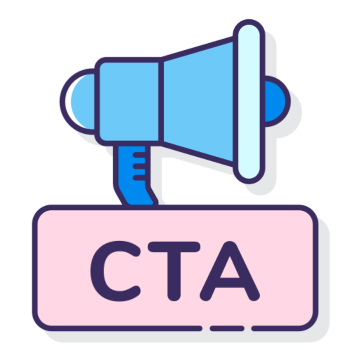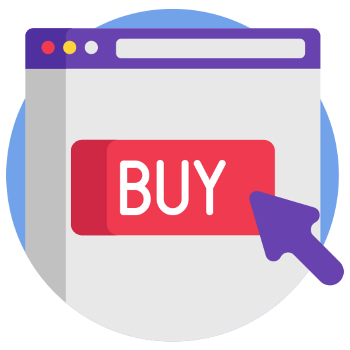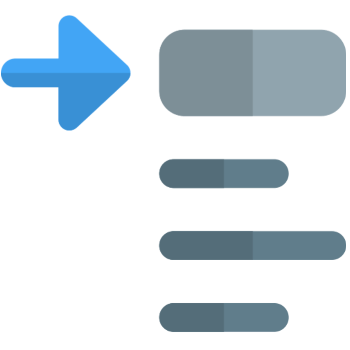sales copy
Common Elements In Highly Converting Sales Copy Part 2

This post is a continuation of looking into the common elements present in highly converting sales copy (you can see the first post here). In it we looked at the headline, storyline, sub-headlines, testimonials, and statistics to increase confidence.
Now lets’s continue and firstly let’s look at using media such as video and images.
Using Images And Videos In Your Copy
Sticking to text alone in your sales copy will be a big turn off for most prospective customers. Big, long blocks of text look boring and overwhelming. People have short attention spans now, so you need to break that text up with images and videos.
You can use stock photo sites like iStockPhoto or DepositPhotos to break up the text. If you want to use free stock photo sites you can check out Pixabay, Pexels or Unsplash, but if you can afford to pay for your images ,they will be better and more unique.
For example, if you’re in a section where the sub-headline and storyline are discussion frustration for diet failures, you might want to use an image of a man or woman feeling frustrated in front of a plate of food or on a weight scale.
With video, keep it short if you’re using it to break up the text sales copy. You don’t want to have five 20-minute videos on the page. Just keep it under 3 minutes each. Sometimes, it might require more, such as if it’s a demo of a software.
Don’t have the videos auto-play. Some marketers do prefer this, but most consumers don’t. If they have their volume up and they’re at work or somewhere quiet, and suddenly your sales page starts blaring, they’ll leave quickly.
When you host your video, make sure you eliminate as many click out options as possible. For example, if you host on Vimeo, it automatically defaults to make the Vimeo logo clickable, your name, the title of the video, and more clickable – all taking your customer away from the sales copy.
Strategic Bullet points To Help Clear Up Confusion

Bullet points are a blessing to most consumers who are short on time and who want to just get a quick rundown of what your product can do for them. The benefits are what many marketers focus on with their bullet points.
But you can also include pain points as bullet points. For example, you might have a sentence that says, “Wouldn’t you love to…” and then have bullet points addressing their pain points – stop having to shop in plus sized stores, avoid the shame and embarrassment of swimsuit season, etc.
Another way to strategically use bullet points is to have a rundown of what all is included in your product. You can say, “In this bundle, you’ll get…” and then go into detail about what all is included, such as – a 38-page PDF guide, 10 checklists, 5 videos you can refer to whenever you need them, and so on.
A Guarantee Can Close The Deal

A guarantee can be both an image and text explanation. You can get stock photos that say “Money Back Guarantee 100%” or instead of 100%, they may say 7 days, 30 days, 90 days and so on.
You can use bold text and a note that simply explains your guarantee (or lack thereof if you decide not to offer one). The main thing you need to do is remember which guarantee you chose and abide by it.
Don’t offer a 60-day no questions asked guarantee if you’re going to harass your customer about why they want a refund and then refuse to give it to them. When you do this, word gets around and it could even put your accounts on various platforms at risk.
Create A Call To Action To Guide Them To The Finish Line

Authentic urgency is lacking in the online marketing industry. Too many unethical sellers use false urgency to try to get a sale. Instead, create real urgency and scarcity because in future launches, people will know not to wait.
Never expect people to automatically know to click the buy button, download now, and get started. You have to state it and guide the customer through every step along the way.
Working With Buy Button Options

With buy buttons, you have the option to use a button that a platform provides for you – like PayPal, Warrior Plus or JVZoo. But you can also download and use a button of your choosing.
For example, on JVZoo, there’s a button option that says 100% satisfaction guaranteed, so it would need to match what you want to stand behind.
If you want to have a bit more freedom, you can use a payment processor such as Thrivecart and this is probably more advantageous in the long run.
As far as placement, some people only put one buy button at the very bottom of the page, while others place them throughout the sales copy. You may want to have it at the bottom with a countdown timer right above it, showing when the launch pricing or sale ends.
The Importance Of A Simple Post Script And Signature Area

Somewhere at the bottom, make sure you have a digital signature along with your image. People like to know who they’re buying from. You can either upload your real signature or create one from a variety of fonts online.
A good way to craft them is to use the first P.S. to restate the main benefits and what’s included. Use the second P.S. to reiterate the sense of urgency and what happens if they miss out on this great deal.
OK, so there you have the most common elements in highly converting sales copy. Add these to your sales pages and you should see immediate results!
And remember, if you want to have great results writing highly converting copy, you need to understand that this is difficult for many people as there are so many mistakes that can have a dramatic effect on conversions.
To help you avoid these mistakes, take a look at the featured resource below where you can download a copy of a free report, Copywriting Blunders, so you will be forewarned. Download, read it and take action 😊

Common Elements In Highly Converting Sales Copy Part 1

When you’re new to writing sales copy, it can feel a bit daunting trying to remember what all needs to go on the page to convert a visitor into a buyer. But once you learn the fundamental elements that help inform and sway your audience, you’ll be able to utilize them repeatedly to grow your business.
The great thing is, you get to decide, based on what you’ve seen in the marketplace and what you feel comfortable with, what to put in your own copy. You can even split test the page to see what works best – one headline versus another or three testimonials versus zero, for example.
Creating Your Main Headlines

When you’re working with your primary (larger) headlines, you’ll often see certain strategies being implemented in niche marketing. For example, one common starter headline used to be “Who else wants to…?”
Another thing you can do is ask a question or discuss the biggest benefit or pain point that a person viewing your page might have. You can find books on Amazon and elsewhere that do nothing but teach you the strategy of writing persuasive headlines, and many will have built in swipes for you to use when tailoring them to your own niche.
You can also find free swipe files online that you can tweak.
What Will Your Storyline Contain?

After your major headline(s), you’ll typically have your main storyline. This is where you introduce the slant and tone of your sales letter. You might be all hype talking about money or pounds lost.
You might have the demeanor of a drill sergeant or that of a coddling, kumbaya leader. This is where the prospective customer will gain some insight about what kind of product (and person) they’re about to encounter.
With storyline, you’re making that connection that builds trust between you and the consumer. You’re letting them know you understand their problem and that you have enough empathy to help them through it.
Drilling Down Into Specifics with Sub-headlines

While your main headline will discuss the biggest issue, like earning money or losing weight, your sub-headlines can dig down into some of the other aspects of their pain points.
Think about the benefits, for example. Earning more money does many things – gives them peace of mind, helps them live the life they want with vacations, cars, homes, etc. It allows them to be their own boss.
When you have sub-headlines talking about different things, the consumer can scroll past items they don’t care about and find the ones they do. It may also give them insight into things they hadn’t considered yet.
Make sure that in your sub-headlines, you’re giving everything away. You want it to plant a seed or an idea in their minds of what they’ll gain by buying your product. Some marketers go too far and say too much in their copy.
Using Testimonials in Your Sales Copy

Testimonials are not necessary to your sales copy, but real ones probably do help to convince buyers that you and your products are legitimate and worthy of consideration. If you don’t have any natural testimonials, you can solicit them.
If possible, ask them to provide a video testimonial, because those are always more effective. Don’t use phony stock photos and make up testimonials. This almost always gets found out and then you ruin your reputation because customers won’t trust you anymore.
Gather Your Statistics To Boost Confidence In Your Product

Statistics and numbers can be very convincing when it comes to strengthening your sales copy. It verifies your information and advice from outside sources and supports your recommendations.
For example, you might find a statistic that says 8 out of 10 people succeed with one diet while only 4 out of 10 succeed long-term with another. That’s a fact that would give the consumer more certainty that they’re choosing the right one.
Failure statistics are also effective. If you can say that 70% of people fail when they do something, it’s a warning to readers that they need to avoid that and do something else (whatever it is you’re recommending).
One statistic you can look up is the number of sufferers or people in the same boat as someone else. For example, over 300 million people worldwide have diabetes. Talk about if the problem is growing or if it’s getting under control.
We’ll continue this in part 2, but in the meantime if you want to have great results writing highly converting copy , you need to understand that this is difficult for many people as there are so many mistakes that can have a dramatic effect on conversions.
To help you avoid these mistakes, take a look at the featured resource below where you can download a copy of a free report, Copywriting Blunders, so you will be forewarned. Download, read it and take action 😊




